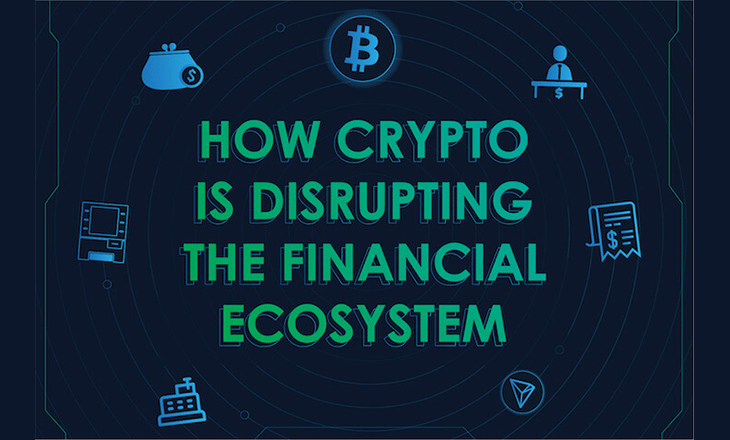Fortunly.com has recently released a new pictogram entitled “How Crypto Is Disrupting the Financial Ecosystem”, which presents how cryptos have evolved over the past decade and how they are reshaping the world of domestic and global commerce today.

Source: fortunly.com
Per its website, Fortunly.com’s mission is “to make the complicated world of money accessible to everyone”. They hope to “demystify financial procedures, interpret jargon, and reduce complex transactions in to simple English, keeping a vigilant eye on financial markets so we can help you make decisions with confidence.” In other words, this website is a “go to” place for finding clear explanations and data about financial matters.
As for all things crypto, the folks at Fortunly.com explain:
To idealists, it’s a brave new idea. To your parents, it’s a hipster fad. Civil libertarians see it as a tool to help us escape the oppression of banks and governments. Politicians see it as an illegal enabler of deep-web sites like the Silk Road. It’s there as a way for the average consumer to regain some financial power. It’s there for criminals to abuse. Hero or villain, crypto is no longer a part of our distant future — it’s happening right now.
It has been just over a decade since the debut of cryptocurrencies and their associated blockchain decentralized ledger technologies. In 2008, when Satoshi Nakamoto (who has yet to be identified and may even be a team of technologists) released his groundbreaking whitepaper, “Bitcoin: A Peer to Peer Electronic Cash System”, the world was put on notice that a major sea change was approaching the rather stodgy financial services industry. It would be years later until the likes of Ethereum and Ripple came into being, but digital assets became fashionable in 2017, when speculators joined the fray.
Suddenly, there were hundreds and soon thousands of individual blockchain development efforts, seeking funding via Initial Coin Offerings (ICOs). Billions have been invested, and as with many other explosions in the venture capital arena, many initial ideas did not pan out. Fear of missing out, however, ran rampant throughout the investment community, driving prices beyond sustainability. The manic “balloon” burst in 2018 and resulted in “Crypto Winter”, where the cryptocurrency market lost 85% of its value.
Over the course of its decade of hyper growth, the pictogram reminds us that great strides were made in the crypto industry. Even though values had crashed during 2018, a recovery had begun. There were 35 million users in the crypto-verse, no small feat in and of itself, although this figure was still less than 1% of the global population. BTC ATMs were in over 90 countries, and the demand for blockchain programming expertise had gone through the roof. Over 5,700 blockchain job listings appeared in 2018, and as we reported a while back, these jobs represented a 517% increase, year over year.
Today, the market capitalization of all coin systems exceeds $250 billion, and if you add in the value of exchanges, mining operations, and all other supporting organizations, this figure would double. This market cap may only be roughly half of the amount it was at back at its peak in late 2017, but industry estimates are that new All-Time-Highs will be achieved in 2020 or beyond.
The pictogram continues by enumerating a few of the “disruptions” that are occurring today across the world of commercial banking and several other industry sectors, too. From time to time, we have also reported on a number of these blockchain breakthroughs, as well (Blockchain experiments proliferating throughout every business sector and Forbes’ new “Top 50” list: Blockchain and the world’s largest corporations).
The largest threat remains how the crypto-verse will eventually adapt to the needs of regulatory establishments across the globe. The staff at Fortunly concludes:
Blockchain technology is changing the world of finance and giving us a tool that could potentially transform global law, commerce, and politics. And the danger it presents? Well, that lies mostly in the fact that cryptocurrencies aren’t well regulated, which is bound to change as governments implement new measures to protect their financial systems.
